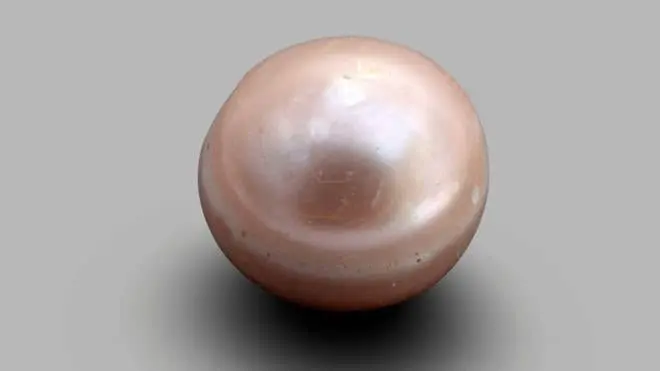In 2019, a group of archaeologists announced the discovery of the oldest pearl to date. Both the layers of soil from which it was extracted and radiocarbon dating suggest its origin: between 5600 and 5800 BC. This gemstone was discovered in 2017, at an archaeological site from the Neolithic period, located on a small island near Abu Dhabi, in the United Arab Emirates.

The piece has a pale pink hue and measures just over 3 millimeters. 8000 years ago, this small island west of Abu Dhabi city was home to a community from the Neolithic period, the last period of the Stone Age where the first urban settlements were founded and agriculture emerged.
The ruins on Marawah Island.
On Marawah Island are the ruins of a construction from those times, used by human beings familiar with life on the coasts. Remains of various marine animals were also discovered among the ruins: turtle bones, dolphins and fish reveal that there was a very active dynamic between the inhabitants and the marine ecosystem.
The discovery of the pearl is important for understanding the lifestyle these people led. “The existence of pearls at archaeological sites is proof that the trade in these pieces has been going on since at least the Neolithic period,” Abdulla Khalfan Al-Kaabi, director of the archaeology division at Abu Dhabi’s Department of Culture and Tourism, said in a statement.

Abu Dhabi and pearl production.
Pearls are produced inside oysters and other muscles as a reaction to the presence of a foreign body, which can be anything from a grain of sand to another animal. It is a fact that pearls always had value for humans, in the past they cost fortunes along with precious metals as they were used in the decoration of jewelry and luxury items. Abu Dhabi is referred to in various historical documents as an important pearl-producing region.
For many centuries, and especially in the 19th century, the city was kept on its feet by the pearl trade. However, with the advent of oil, the Japanese dominated the pearl industry. It would be the Japanese who would develop techniques to grow and create perfect, round and smooth pearls. In the past, peoples such as the Marawah obtained pearls in a more artisanal way, exploring the ocean floor to hunt wild pearls.
It is not known when these hunts began on the seabed. However, to the surprise of archaeologists, this practice is much older than previously thought in the region. “The Abu Dhabi pearl is an impressive find, a testament to the ancient origins of our interaction with the sea,” Mohamed Khalifa Al Mubarak, head of Abu Dhabi’s Department of Culture and Tourism, said in a statement.
Prehistoric pearls.
“The discovery of the world’s oldest pearl in Abu Dhabi makes it clear that our recent economic and cultural history has deep roots that extend back to the dawn of prehistory,” said Al Mubarak. In these same ruins, which began excavation in 1992, archaeologists found pottery pieces from Mesopotamia, perhaps as an indication that the people in Marawah exchanged their pearls for goods from nearby civilizations.

This pearl snatched the title of the oldest in the world from another piece unearthed in 2012 in um al-Qaywayn, another of the seven Arab emirates. The gem would have been produced in 5500 B.C. In addition to their intrinsic beauty, everything suggests that pearls had a high symbolic value in the region. Several pearls were found inside the tombs, where they were deposited between the lips of the dead.
This week, the world’s oldest pink pearl will be on display for the first time. It is part of an exhibition of 350 items entitled 10 Thousand Years of Luxury, organized by the Louvre Abu Dhabi museum. The exhibition ranges from a 15th-century romper to contemporary objects from brands such as Chanel and Louis Vuitton, in order to explore the history and meaning of luxury goods from ancient times to the present day.
